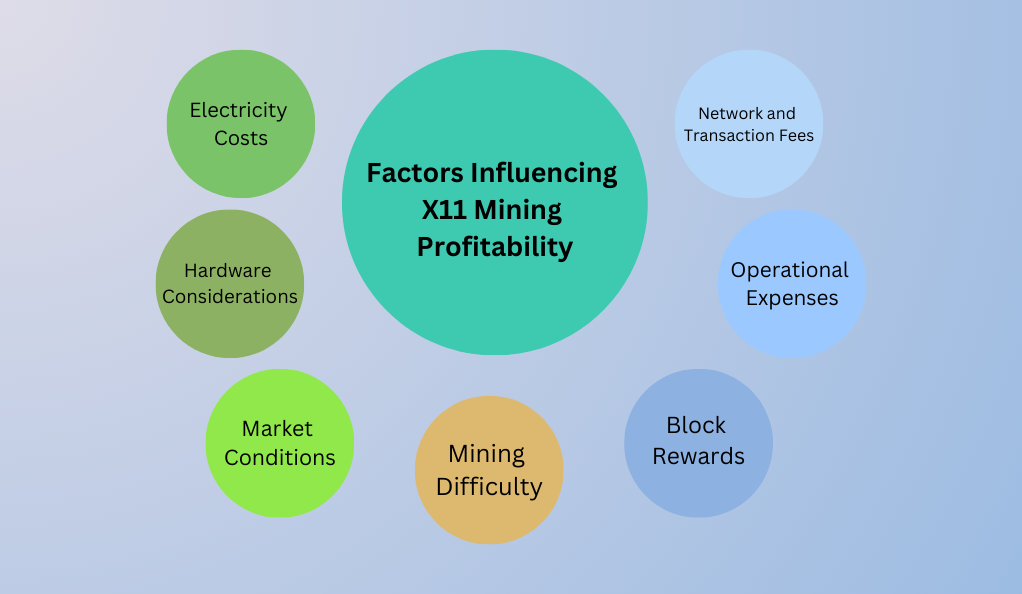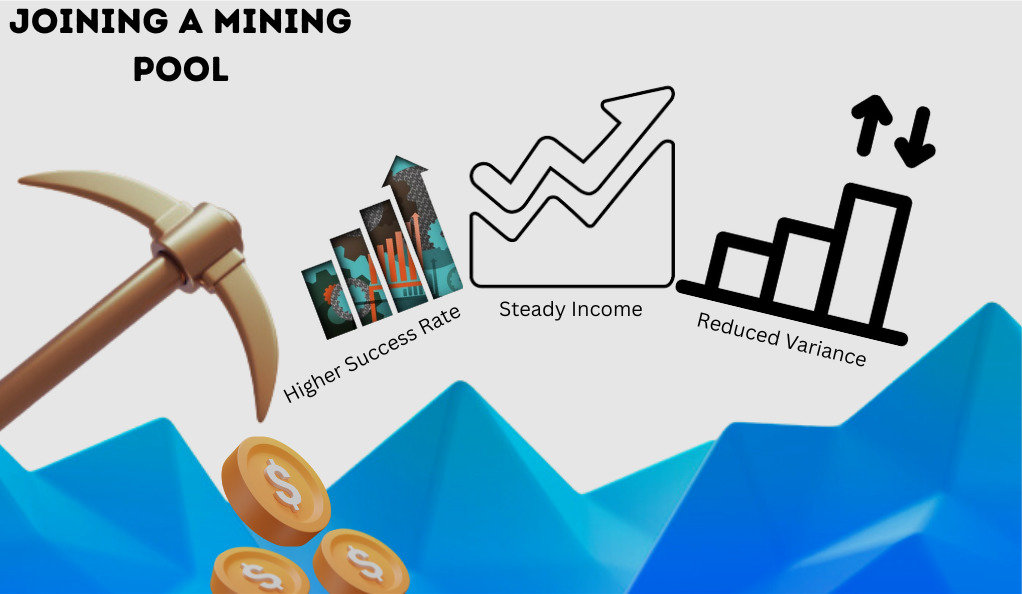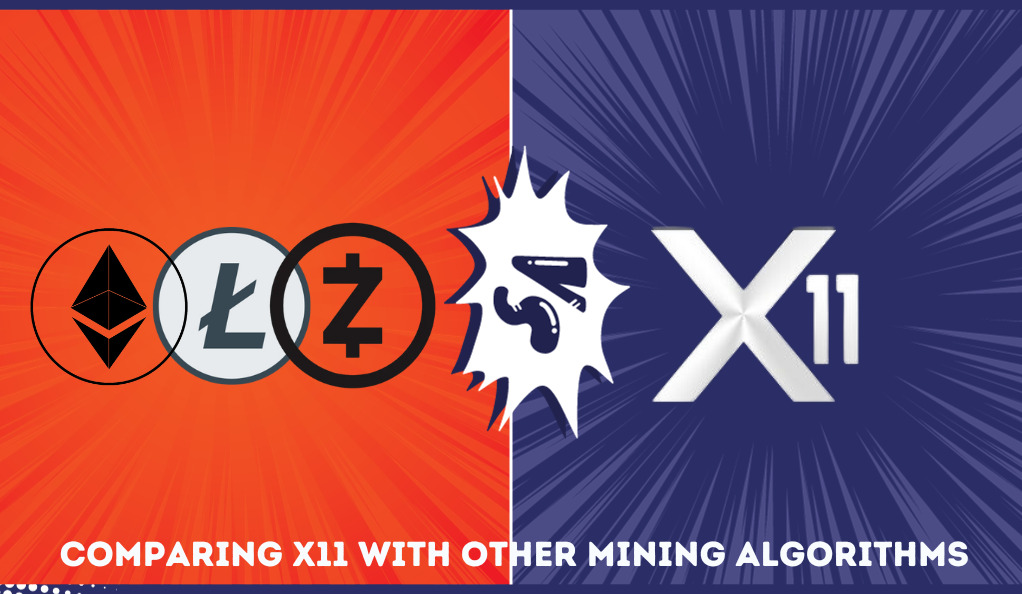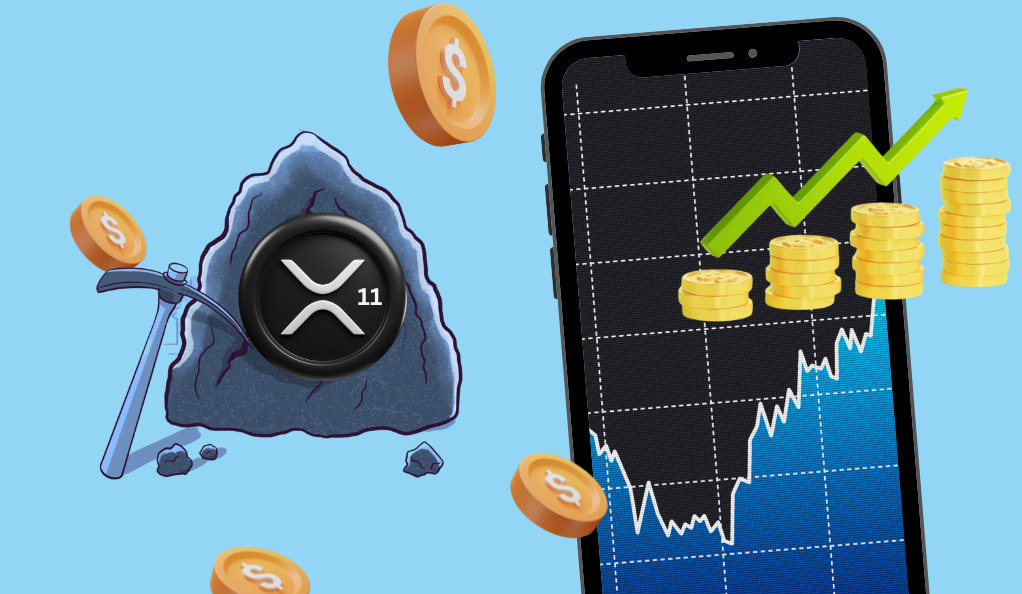X11 mining, at its core, is a cryptographic hashing method used for proof-of-work purposes. Named for its use of 11 different hashing functions, X11 is a chained hashing algorithm that offers a higher level of security and efficiency compared to its predecessors. But what makes it stand out in the crowded world of crypto algorithms? Let’s dive deeper.
Origins and Development
The X11 algorithm was introduced with Dash (formerly known as Darkcoin) in January 2014 by its developer, Evan Duffield. The primary motivation behind its creation was to address potential vulnerabilities in Bitcoin’s SHA-256 algorithm. By utilizing a chain of 11 different scientific hashing algorithms, X11 was designed to prevent single-point failures and offer enhanced resistance against potential attacks.
Technical Aspects
The 11 hashing functions used in the X11 algorithm are: blake, bmw, groestl, jh, keccak, skein, luffa, cubehash, shavite, simd, and echo. When a block of data is processed, it sequentially passes through all these functions. This not only ensures a higher degree of security but also provides a more complex computational process, making it harder for attackers to find vulnerabilities.
Efficiency and Energy Consumption
One of the standout features of X11 is its energy efficiency. Traditional algorithms, like Bitcoin’s SHA-256, are known to consume significant amounts of energy, leading to higher costs for miners and environmental concerns. X11, on the other hand, is designed to be more energy-efficient, allowing for cooler system temperatures and longer hardware lifespans. This efficiency translates to cost savings for miners and a reduced environmental footprint.
Adoption and Popularity
While Dash is the most renowned cryptocurrency to adopt the X11 algorithm, several other coins have also integrated it, valuing its security and efficiency features. Over the years, the popularity of X11 has grown, leading to the development of specialized mining hardware, known as ASICs, optimized for the X11 algorithm.
Factors Influencing X11 Mining Profitability
Mining profitability, especially in the realm of cryptocurrencies, is a dynamic metric influenced by a myriad of factors. For those venturing into X11 mining, understanding these determinants can be the difference between a profitable endeavor and a costly experiment. Here’s a deep dive into the primary factors that influence X11 mining profitability.

Electricity Costs
Arguably the most significant overhead for any mining operation, electricity costs can make or break profitability. X11, despite being more energy-efficient than some other algorithms, still requires substantial computational power. Miners need to be acutely aware of their local electricity rates and factor them into their operational expenses.
Hardware Considerations
The type of hardware used plays a pivotal role in determining profitability. While GPUs (Graphics Processing Units) can be used for X11 mining, ASICs (Application-Specific Integrated Circuits) designed specifically for the X11 algorithm offer superior performance. However, they come at a higher initial cost. The balance between initial investment and long-term profitability is crucial.
Market Conditions
The value of the cryptocurrency being mined directly impacts profitability. A surge in the price of Dash or any other X11-based coin can lead to increased profits, while a market downturn can have the opposite effect. It’s essential for miners to stay updated with market trends and adjust their mining strategies accordingly.
Mining Difficulty
As more miners join the network and the total computational power increases, the difficulty of solving the cryptographic puzzles also rises. An increase in mining difficulty means miners receive fewer rewards for their efforts, impacting profitability.
Block Rewards
Cryptocurrencies often have a decreasing block reward system to control the total supply. As more coins are mined, the rewards for mining new blocks may decrease, leading to reduced earnings for miners unless compensated by a rise in the coin’s value.
Operational Expenses
Beyond electricity and hardware, miners have other operational costs, including cooling systems, maintenance, and potential rental costs for the mining location. Efficient management of these expenses is crucial for maintaining profitability.
Network and Transaction Fees
Some cryptocurrencies offer transaction fees as incentives for miners. These fees can provide an additional revenue stream, especially during times when block rewards are low or the market value of the mined coin is down.
X11 Mining Pools and Their Role
Mining pools have become an integral part of the cryptocurrency landscape, offering individual miners the opportunity to combine their computational resources and increase their chances of earning rewards. For those involved in X11 mining, understanding the role and significance of these pools is paramount. Let’s delve into the world of X11 mining pools and their impact on the mining ecosystem.
What are Mining Pools?
A mining pool is essentially a collective of miners who pool their resources together to mine cryptocurrencies. By working together, these miners increase their chances of solving the cryptographic puzzles required to validate and add transactions to the blockchain. In return for their efforts, they share the rewards based on their contributed computational power.
Benefits of Joining a Mining Pool

- Higher Success Rate: Individual miners, especially those with limited resources, might find it challenging to compete with larger operations. Pools increase the likelihood of earning rewards, even if they’re shared among many participants.
- Steady Income: Instead of the sporadic rewards that solo miners might experience, pools often provide more regular and predictable payouts.
- Reduced Variance: Mining is inherently probabilistic. By joining a pool, miners can reduce the variance and unpredictability associated with solo mining.
How Mining Pools Work
When a member of the pool successfully mines a block, the rewards are distributed among all members based on their contributed hash power. Different pools might use different distribution methods, such as Pay-per-Share (PPS) or Proportional (PROP), each with its own advantages and drawbacks.
Choosing the Right X11 Mining Pool
Factors to consider when selecting a mining pool include:
Fee Structure: Most pools charge a fee, which can be a fixed amount or a percentage of the mining rewards.
Payment System: The method used to distribute rewards among pool members.
Reliability and Uptime: A pool that frequently goes offline can impact miners’ profitability.
Reputation: It’s essential to join reputable pools known for fair payouts and transparent operations.
Potential Drawbacks of Mining Pools
While pools offer many advantages, there are potential drawbacks:
- Centralization Concerns: If a few large pools control a significant portion of the network’s hash power, it could lead to centralization, going against the decentralized ethos of cryptocurrencies.
- Reduced Individual Payouts: While rewards might be more frequent in a pool, they’re also divided among all members, leading to smaller individual payouts.
The Evolution of X11 Mining Pools
Over the years, as the popularity of X11 and its associated cryptocurrencies has grown, so has the sophistication and variety of mining pools catering to it. From basic pooling systems to advanced platforms offering detailed analytics, miners today have a plethora of options to choose from.
Strategies to Maximize X11 Mining Profits
In the ever-evolving world of cryptocurrency mining, staying profitable requires not just the right tools but also the right strategies. For those involved in X11 mining, maximizing profits is a blend of technical know-how, market acumen, and strategic foresight. Here are some key strategies to consider:
Optimal Hardware Selection
- ASICs vs. GPUs: While GPUs are versatile and can be used for various mining algorithms, ASICs designed specifically for X11 offer superior performance. Investing in the right hardware can significantly boost profitability.
- Hardware Efficiency: Prioritize machines with higher hash rates and lower power consumption. This ensures more coins are mined while keeping electricity costs in check.
Energy Efficiency Measures
When choosing a location for your mining operations, it’s crucial to prioritize regions with cooler climates and affordable electricity rates. This strategic decision minimizes cooling expenses and overall operational costs. Additionally, investing in efficient cooling solutions is essential to extend the lifespan of your hardware and prevent overheating issues, ensuring uninterrupted mining operations.
Stay Updated with Market Trends
- Cryptocurrency Valuation: Regularly monitor the market value of X11-based coins. This helps in making informed decisions about which coins to mine and when to sell.
- Mining Difficulty: Keep an eye on the mining difficulty of X11 coins. A sudden increase might make some coins less profitable to mine.
Diversification
Multiple Cryptocurrencies: Don’t put all your eggs in one basket. Consider diversifying your mining operations across several X11-based cryptocurrencies to hedge against market volatility.
Investment Diversification: Reinvest some of your mining profits into other forms of investments, such as staking or traditional assets, to spread risk.
Join Reputable Mining Pools
While solo mining can offer larger individual rewards, the chances of successfully mining a block are lower. Joining a reputable mining pool can provide more consistent returns, even if they are shared among members.
Regular Maintenance and Upgrades
- Hardware Maintenance: Regularly clean and maintain your mining hardware to ensure it runs efficiently and has a longer operational life.
- Software Updates: Ensure that your mining software is always updated. New updates often come with performance improvements and security patches.
Risk Management
Backup Power Solutions: Invest in backup power solutions to ensure continuous mining operations during power outages.
Security Measures: Implement robust security measures to protect your mined coins from thefts, hacks, and unauthorized access.
Stay Informed and Educated
The world of cryptocurrency is dynamic. Engage with mining communities, attend webinars, and read up on the latest trends and technologies. Being informed allows you to adapt and make decisions that can positively impact profitability.
Comparing X11 with Other Mining Algorithms
The cryptocurrency landscape is vast, with multiple mining algorithms each designed with specific goals and characteristics. X11, with its unique chained hashing approach, stands out in many ways. But how does it stack up against other popular mining algorithms? Let’s delve into a comparative analysis.

X11 vs. Scrypt (Litecoin’s Algorithm)
In terms of memory intensity, Scrypt was initially designed to thwart ASIC dominance but has seen the development of more expensive ASICs. Meanwhile, X11 is less memory-intensive but achieves complexity through multiple hashing functions. In the adoption realm, Scrypt is closely linked with Litecoin, whereas X11 finds use in various cryptocurrencies, with Dash being the most notable example.
X11 vs. Ethash (Ethereum’s Algorithm)
ASIC Resistance: Ethash was designed to be ASIC-resistant, favoring GPU mining. However, ASICs for Ethash have emerged over time. X11, while initially mined with GPUs, has seen a shift towards ASIC mining due to efficiency and profitability reasons.
Purpose: Ethash is tailored for Ethereum’s smart contract functionality, while X11’s design focuses on security and efficiency.
X11 vs. Equihash (Zcash’s Algorithm)
Equihash was crafted with a decentralization focus, utilizing memory-oriented properties to resist ASIC domination. In contrast, X11 achieves decentralization through its multi-function hashing approach, albeit with less memory emphasis. When it comes to performance, X11’s energy efficiency often translates to superior power consumption performance, particularly when ASICs are in use, compared to Equihash.
X11 vs. CryptoNight (Monero’s Algorithm)
ASIC Resistance: CryptoNight aims to level the playing field between CPU, GPU, and ASIC miners. X11, while initially favorable for GPUs, has seen a significant shift to ASIC mining.
Algorithm Flexibility: CryptoNight has undergone several tweaks to maintain its ASIC resistance, while X11 has remained consistent in its design and approach.
General Advantages of X11
- Security: The chained hashing approach provides a layered security measure, making it difficult for potential attackers to find vulnerabilities.
- Versatility: X11’s design allows for both GPU and ASIC mining, offering flexibility to miners based on their preferences and resources.
- Energy Efficiency: One of X11’s standout features is its energy efficiency, which can lead to cost savings and a reduced environmental footprint.
Environmental Impact of X11 Mining
The environmental implications of cryptocurrency mining have become a topic of intense debate and scrutiny. As digital currencies gain prominence, the energy consumption and carbon footprint associated with their production come under the spotlight. X11 mining, like other algorithms, has its environmental considerations. Here’s an exploration of its impact on our planet.
Energy Consumption
- Efficiency of X11: One of X11’s notable features is its energy efficiency compared to some other algorithms. While it does consume power, especially when mined using powerful ASICs, its design aims to reduce energy use, leading to potentially lower electricity bills and a smaller carbon footprint.
- Comparative Analysis: When benchmarked against energy-intensive algorithms like SHA-256, X11 tends to fare better in terms of energy consumption per transaction or block mined.
Carbon Footprint
The carbon footprint of X11 mining is heavily influenced by the electricity source, with operations in fossil fuel-dependent regions resulting in a higher footprint compared to those powered by renewables. Efficient cooling systems are crucial for large-scale mining but X11’s energy-efficient design can help maintain cooler operations, potentially reducing the demand for extensive cooling and further energy consumption.
| Aspect | Hardware Lifespan |
|---|---|
| Mining hardware, including GPUs and ASICs, has a | |
| finite operational life, contributing to electronic | |
| waste when they become obsolete or non-functional. | |
| Prolonging Lifespan | Regular maintenance and optimal operating conditions |
| can extend the operational life of mining hardware, | |
| reducing the generation of electronic waste. | |
| Recycling and Upcycling | Miners can mitigate the environmental impact by |
| recycling old hardware or repurposing it for other | |
| computational tasks, giving it a second life and | |
| reducing e-waste. |
Mitigation Measures
- Transition to Renewable Energy: Miners can significantly reduce their carbon footprint by powering their operations with renewable energy sources like solar, wind, or hydroelectric power.
- Energy-Efficient Hardware: Investing in the latest and most energy-efficient mining hardware can further reduce energy consumption.
- Awareness and Advocacy: The mining community can play a role in promoting sustainable practices, advocating for green energy solutions, and supporting initiatives that offset the environmental impact of mining.
The Broader Perspective
When considering the environmental costs of cryptocurrency mining, it’s crucial to weigh them against the energy consumption and resource utilization of traditional financial systems, such as banks, ATMs, and the infrastructure supporting fiat currencies. Furthermore, the cryptocurrency industry is still in its infancy, and ongoing research and innovation are expected to result in increasingly energy-efficient algorithms and mining methods, pointing toward a more sustainable future.
Conclusion
The world of cryptocurrency mining is a captivating realm, filled with technical intricacies and global implications. As we delve into X11 mining, several key insights surface. First, the X11 algorithm’s technical brilliance, featuring 11 distinct hashing functions, underscores the crypto community’s commitment to innovation, emphasizing security and energy efficiency. Second, profitability in X11 mining hinges not only on technical expertise but also on economic savvy, considering factors like electricity costs, hardware efficiency, and market dynamics. Moreover, the collaborative power of mining pools highlights the industry’s adaptability and collective strength.
Furthermore, the environmental impact of X11 mining reminds us of the cryptocurrency industry’s responsibility to our planet. It calls for sustainable practices, green energy solutions, and continuous innovation to minimize the carbon footprint. Looking ahead, the cryptocurrency landscape will undoubtedly continue to evolve, introducing new algorithms and innovations alongside X11, each contributing its unique strengths to this dynamic and ever-expanding domain.
At axerunners.com, our goal is to furnish well-rounded and trustworthy information regarding cryptocurrency, finance, trading, and stocks. Nonetheless, we avoid providing financial advice and instead encourage users to conduct their own research and meticulous verification.
Read More













